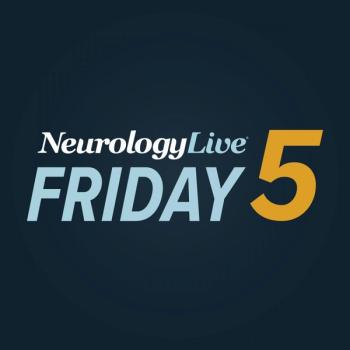
Defining Refractory Migraine for Diagnosis: Insights from an International Delphi Consensus
Jennifer Robblee, MD, MSc, headache neurologist at the Barrow Neurological Institute, talked about an expert panel that developed a consensus definition for refractory migraine.
Clinicians have expressed the need for a clear and widely accepted definition of refractory migraine to better characterize the condition, understand its prevalence, and identify optimal treatment strategies. The current epidemiology and underlying biological differences of patients with refractory migraine seem to be unclear, and patients may often face challenges in accessing appropriate care. Research has also highlighted that defining refractory migraine more precisely could help ensure that the right patients are included in clinical trials, addressing inconsistencies in trial eligibility and potentially advance the development of effective therapies.1
At the
During the conversation, she noted that the panel focused on key challenges including how to define treatment failure thresholds and how to reconcile biological differences among patients, with ensuring equitable access to treatments worldwide. Robblee also talked about how the definitions are intended to improve clinical diagnosis, support insurance coverage for advanced therapies, and promote the inclusion of patients with difficult-to-treat migraine in future clinical trials. Emphasizing the need for clinical validation, she expressed hope that this consensus will stimulate further research and lead to better care for patients with refractory migraine.
NeurologyLive: Could you provide some background information on this study about reaching an international consensus for refractory migraine?
Jennifer Robblee, MD, MSc: In this study, we performed a Delphi consensus process, taking a group of international experts in headache medicine—so there are 21 of us—and we did 5 rounds of a consensus process, where we used a survey-like method to try to get people to agree on different questions. Overall, we were trying to build out an international consensus on the definition of refractory migraine.
So far, there have been, over the years, various proposals using the term either intractable or refractory migraine, but as of yet, we've never had an agreed-upon definition. There's nothing in, say, the ICHD-3, not even in the appendix. And so when people have studied this—which is, in and of itself, very infrequent—we've used different definitions that have evolved over the years.
Part of our hope by doing this is that we have an agreed definition, and that will help advocate that we actually study this condition, and that when we study it, we all agree, at least for the time being, what we're studying until we better understand it. So, we've landed with a definition for refractory migraine. And born out of what the European Headache Federation came up with, we also have a definition for resistant migraine. Then we also defined what a treatment responder actually is, and then the concept of probable refractory migraine.
What were some of the key clinical challenges the panel aimed to address when defining refractory migraine through this consensus process?
Yeah, there was a lot. We had a very passionate group, and sometimes people who are at opposite ends of the spectrum. One of the first things that we really needed to agree upon is what the threshold was for being considered refractory. Some people felt that if you tried, to 3 medications and didn't respond, that that was enough for refractory, while the other part of the group felt that you really needed to have tried everything. These were the patients for whom absolutely nothing worked. So, it was trying to bring those two groups together. That was probably one of the hardest parts of the project. I think that's where the European group had come up with the concept of resistant migraine, because what they defined that as is that you have tried at least 3 categories and not responded, while refractory was having tried all categories of evidence-based medicine.
The way that we finally got the group to come to a consensus on that point was trying to consider what the point of these criteria were, and the group was able to agree that we really were using them to try to help understand a biological basis for the concept of refractoriness. And so when I posed the question to the group, “Do you think there is a biological difference between someone who does not respond to 3 treatments, but perhaps will respond to something else, versus someone who has responded to absolutely nothing?” Basically, almost the entire group said yes, biologically, those 2 people are probably different. And so based on that point, we were able to say, okay, well, then we need to have a group that we're defining as they've not responded to anything, but it is reasonable to have the definition of resistant migraine where these people aren't responding to just the first thing you give them. It still takes several trials before we find something that works. That was by far the hardest.
Then part of that led to questions about equity. While the definition needs to be focused on biology, we also want to make sure that it's accessible internationally, and that's part of why an international group was put together. Then there was the question, well, what about countries where they don't have access to new medications, like CGRP medications or a lot of onabotulinum toxin? That's where we got the concept of probable refractory migraine, because, let's say you do not have access to those, you're not able to have a true trial, you perhaps would be refractory migraine, but we'd have no way of knowing because you're not able to try all of the available medications that we have listed, but you're more than resistant because you've tried more than that. That's where we came up with how we make this equitable, but still really focused on we want to understand pathophysiology.
How might this new consensus definition influence treatment strategies or patient equitability for advanced therapies?
Well, part of the definition is that you actually have to have tried a CGRP medication. So, I think that will help show insurance companies that patients with migraine who are not responding to other medications, you really have to cover this. This is the basis of what we have for our current treatments. This is what we consider first-line. And if we don't know if a patient responds to a CGRP medication, then we can't call that person refractory. They haven't tried one of our best medication categories. Hopefully it really helps advocate that this is a key part of our treatment options for patients.
For the patients where they are already defined as refractory, the hope is that because we've now gone through all of the different treatment options that are evidence-based—sometimes when we're trying to access some of those things that are off label or that are more aggressive, like, say, an inpatient infusion—it really helps demonstrate, like, this is a patient who is not just your standard migraine patient who we give them amitriptyline and they respond. This is a patient who we've tried everything and they're not responding. These are patients who we know have high use of healthcare systems, we know that they're patients who have extreme disability, lots of presenteeism, lots of absenteeism. These patients are often on short-term, long-term disability. Like, these are the patients that if you're going to cover any of these off-label, more aggressive options, like this is the group that definitely, we have a good reason that you should be covering.
We hope that it advocates for that, but also then opens up more studying of these patients. Right now clinical trials—for a lot of the CGRP medications, they did say you have 2 to 4 previous medication failures. Well, what if they actually had a group where they studied resistant migraine? So that would be in their 2to 4 category. But what about studying these refractory patients? Especially as new treatment categories come out, there's going to be a whole group of those where, my guess is, they're suddenly not going to be refractory. Say we get a new PACAP medication, suddenly those are going to be the PACAP responders. They're no longer refractory. You want to study those as a specific group as well. My hope is that if we have a consistent definition that we all agree on, we can start to do studies like that.
In what ways do you see this consensus impacting future clinical trials or real-world data collection on the difficult-to-treat migraine population?
The problem right now is when I have these patients sitting in front of me—and this is a huge part of my clinic population—I don't have any studies that are on these patients. In fact, a lot of studies will exclude patients who have a true daily headache, and so many of my patients are never truly headache free. If none of the studies are on my patient population, how do I know what's going to work best for these patients? They really need to be studied as well. I hope this encourages that we will actually include these patients in clinical trials so we can actually know what to do for them as well.
I think the last thing that I want to say is the criteria are not perfect. They're meant to be a starting point. The hope is that we could maybe get them into ICHD-3 or ICHD-4, which is eventually coming, and have them as perhaps an appendix diagnosis. Because what I think really needs to happen now is we need clinical validation. So we need people to actually go out, try to apply it to their clinical population, and see, do we have it right? What do we need to update? How do we need to optimize these criteria and really make it something that we can work towards the best definition that's possible until we have true biological biomarkers to tell us who these patients are? My hope is this is the starting point, and it really inspires people to start to study these groups of patients more, because they're just so impacted, and we're so at a loss of what to do to help them right now.
Transcript edited for clarity.
REFERENCES
1. D'Antona L, Matharu M. Identifying and managing refractory migraine: barriers and opportunities?. J Headache Pain. 2019;20(1):89. Published 2019 Aug 23. doi:10.1186/s10194-019-1040-x
2. Robblee J. Reaching International Consensus on the Diagnosis of Refractory Migraine using a Delphi Consensus Process. Presented at: 2025 AHS Annual Meeting; June 19-22; Minneapolis, MN. OR-09.
Newsletter
Keep your finger on the pulse of neurology—subscribe to NeurologyLive for expert interviews, new data, and breakthrough treatment updates.



































